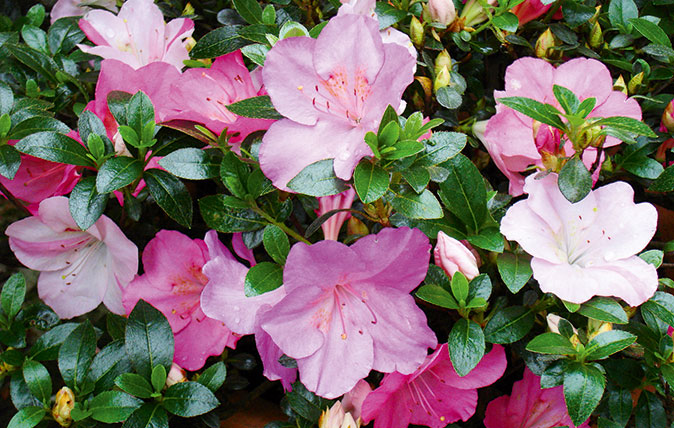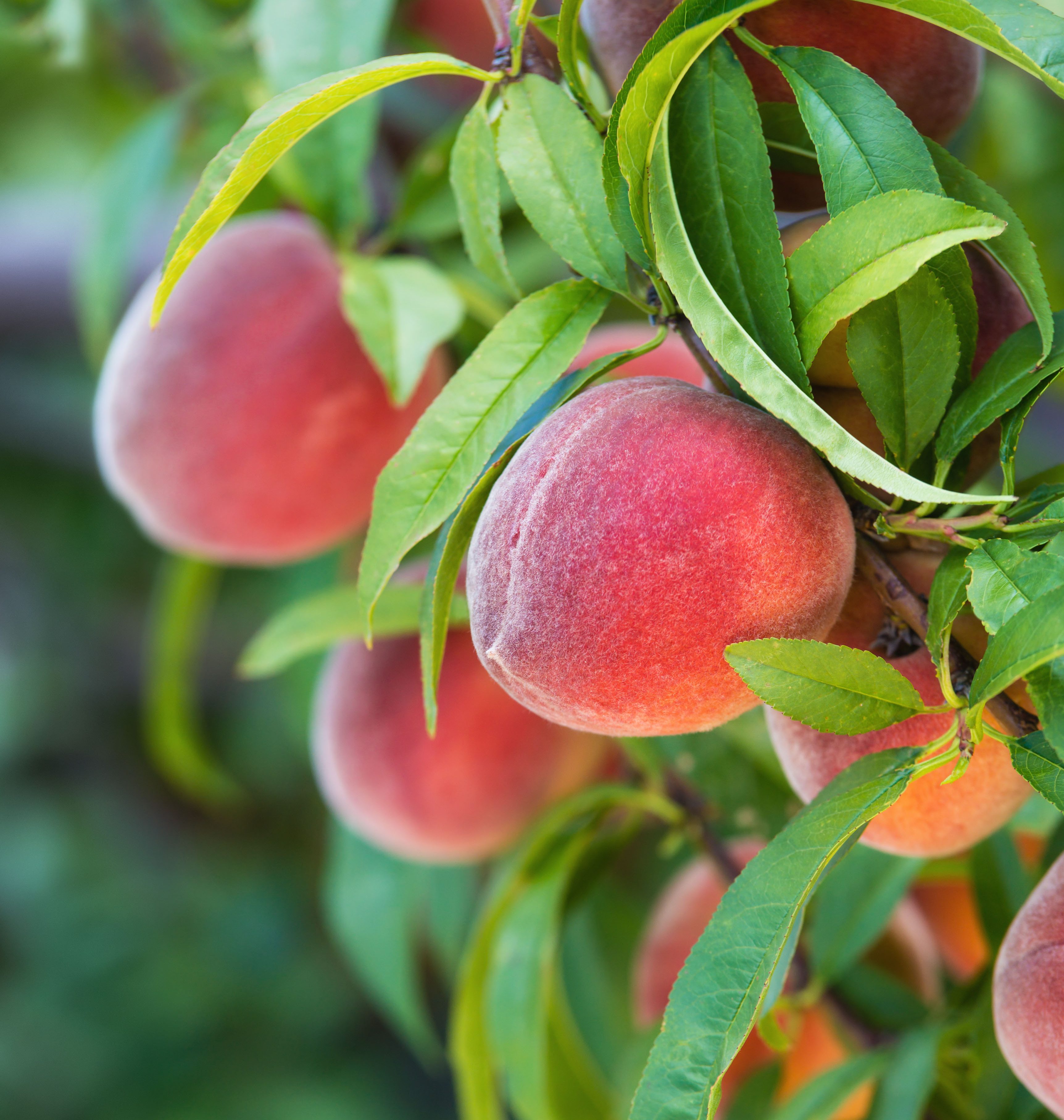The Japanese azaleas set to flourish across Britain's gardens
Mark Griffiths looks at Satsuki azaleas – one of Japan's most revered plants, and yet perfect for an English garden.


In Japan, Satsuki are the most ancient, numerous and adored of all the groups of cultivated azaleas. They take their name from the fifth month of their homeland’s old lunar calendar, which is when they bloom, starting in mid May, peaking around mid June and often continuing into July. As a group, they comprise two native Japanese species, Rhododendron indicum and R. eriocarpum, and, derived from them, a multitude of cultivars and hybrids.
All are compact evergreen or semi-deciduous shrubs, seldom over 3ft tall and dense with diminutive leaves. They’re smaller than the Kurume Azaleas in every respect apart from their flowers. These are showy and, although they open tentatively at first, they soon cover the bush in colour.
Satsuki have been a standard feature of Japanese gardens since the 12th century. Either clipped into shape (soon after flowering) or left alone, they are the familiar evergreen spheres, domes, amoebas, squares and low hedges that punctuate and structure landscape compositions. As a design element, their vegetation’s sculptural permanence is more important than the passing beauty of their blooms, but the latter have not lacked attention.
Satsuki breeding has yielded a vast range of flower form and colour. In some cultivars, the hue is consistent. In others, a remarkable proclivity for sporting results in blooms of more than one colour and pattern – say, red, white and red-and-white-striped – all on the same plant. Rather than pruning out such mutations, the Japanese rightly let them coexist, appreciate them as facets of kaleidoscopic character.
Their love of these bushes that behave like bouquets is manifest in myriad gardens, societies and shows. In Tochigi, a Prefecture (county) famed for horticulture, Satsuki are a way of life and a living: nursery after nursery is devoted to their production and, in some cases, crafting into bonsai, an art for which they’re almost as popular as they are for landscape gardening.

Satsuki were probably the first Japanese azaleas to be grown in Europe. In 1680, Jakob Breyne, a Danzig merchant and plant expert, published an admiring description of one that he’d seen in a garden in the Netherlands. The Dutch imported them from Japan via Batavia, their colony in Java. In consequence, botanists mistakenly believed that they originated from ‘India’ (meaning the East Indies), hence Azalea indica, the name that Linnaeus coined for them in 1753, a misnomer perpetuated in R. indicum.
They are hardy, but this error about their origin led Europeans to suppose otherwise. In the 19th century, the problem was compounded when the name Azalea indica was misapplied to a different and genuinely cold-hating species from southern China. This plant (correctly, R. simsii) spawned a group of tender cultivars that became and remain popular indoor pot plants – varieties that, due to their parent’s misidentification, were called Indica or Indian Azaleas.
Exquisite houses, the beauty of Nature, and how to get the most from your life, straight to your inbox.
These eclipsed true R. indicum and its fellow Satsuki, which, in any case, rarely survived their wrong-headed cossetting in Western glasshouses. Of late, however, we’ve been rediscovering these plants.
We’re beginning to use Satsuki in Japanese-style schemes; as chic and shapely evergreens in European designs both Modern and traditionally formal; to paint rock gardens and the edges of woodland and water; among their Kurume cousins to extend the flowering of azalea collections; and (as I do) in large clay pots to make a display around a courtyard. They ask little in return: sun or good light for at least part of the day and cool, moist, but well-drained acid soil.
A number of British nurseries are now listing Satsuki. For specimens of size and splendour, I’d recommend Paramount Plants in north London (www.paramountplants.co.uk), which offers, among others, two of my favourite cultivars. A dark-green cloud of narrow leaves aflame with silky scarlet flowers, R. Summer Sun reminds me of the wild R. indicum that I’ve encountered beside rivers in Japan.
By contrast, R. Haru-no-sono (‘garden of spring’) proclaims art, glamour and playfulness: a low emerald dome smothered in a motley of gorgeous blooms that are variously orchid purple, fluorescent pink, pale rose, white and particoloured.
These are just the beginning. In its role as International Cul-tivar Registration Authority for Rhododendron, the RHS is developing a database of Satsuki currently grown in Japan. Its compilers – my partner Yoko Otsuki and the Rhododendron registrar Alan Leslie – are in the throes of adding 1,694 cultivars.
The other day, Yoko mused: ‘I wonder if any of that little lot will catch on over here.’ The wonder will be if they don’t.
- - -
Mark Griffiths is the editor of the New RHS Dictionary of Gardening

Alan Titchmarsh: Why Kirstenbosch is the gardener’s garden
Alan Titchmarsh waxes lyrical about one of the world's truly magnificent gardens.

Credit: Leena Robinson / Alamy
How to grow your own peaches: Five steps to peachy perfection
Steven Desmond explains how you can produce these delicious, luxurious fruits on your own soil.
Country Life is unlike any other magazine: the only glossy weekly on the newsstand and the only magazine that has been guest-edited by His Majesty The King not once, but twice. It is a celebration of modern rural life and all its diverse joys and pleasures — that was first published in Queen Victoria's Diamond Jubilee year. Our eclectic mixture of witty and informative content — from the most up-to-date property news and commentary and a coveted glimpse inside some of the UK's best houses and gardens, to gardening, the arts and interior design, written by experts in their field — still cannot be found in print or online, anywhere else.
